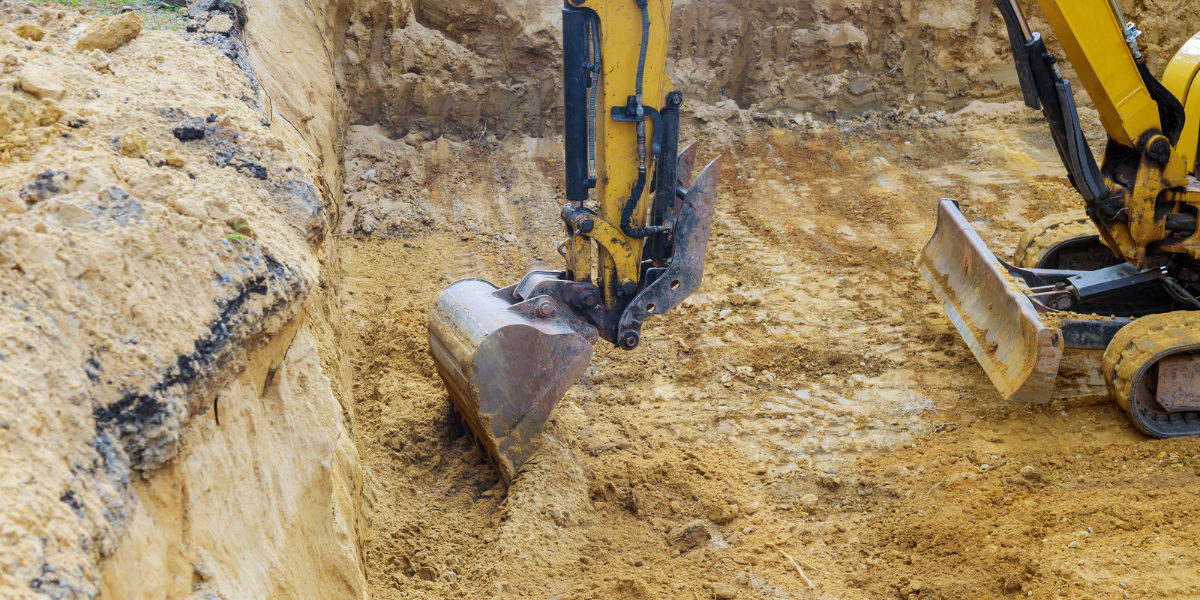Soil Types
There are many different types of soil, and the excavation procedures used for each type can vary. Some common types of soil include clay, silt, sand, and loam. The properties of each type of soil will determine the best excavation techniques to use.
Clay soil is a dense, sticky soil that is made up of fine-grained minerals. It has a high shrink-swell capacity, which means it expands when wet and contracts when dry. Clay soil is difficult to work with, as it is prone to cracking and crumbling when it dries out. To excavate clay soil, special equipment, such as a clay spade or a backhoe, is often necessary to loosen and remove the soil.
Silt soil is fine-grained soil that is made up of very small particles. It is often found in areas with high water content near rivers or streams. Silt soil is relatively easy to work with, as it is not as dense as clay soil. A shovel or small machine, such as a mini-excavator, may be used to excavate silt soil.
Sand soil is coarse-grained soil that is made up of large, angular particles. It is often found in beach and desert areas and is relatively easy to work with. A shovel or small machine, such as a mini-excavator, may be used to excavate sand soil.
Loam soil is a mixture of sand, silt, and clay and is considered the most fertile type of soil. It is easy to work with and holds moisture well, making it ideal for growing plants. A shovel or small machine, such as a mini-excavator, may be used to excavate loam soil.
Geotechnical Report
Where do we start with finding information about soils and their conditions on a construction project? The geotechnical report is the answer to our question.
A geotechnical report is an important tool that provides information about the soil types and conditions at a construction site. It’s important to review this report carefully in order to make informed decisions about the excavation methodology. Keep in mind that the report is provided for informational purposes only, and it’s up to you to interpret the content and use it to your advantage. As a cost estimator, it’s crucial that you understand the information in the report and use it to make smart decisions about the excavation process.
To read a geotechnical report for excavation procedures, you should start by looking at the executive summary, which provides a summary of the main findings and recommendations of the report. This should give you a good overview of the soil conditions at the site and any potential challenges or issues that may need to be addressed during the excavation process.
Next, you should review the sections of the report that provide information about the site conditions and the soil properties. This may include information about the site’s geology, the soil composition and classification, the soil’s moisture content, and the soil’s strength and stability.
You should also review the sections of the report that address any potential hazards or risks associated with the soil conditions at the site. This may include information about soil erosion, slope stability, and the potential for landslides or other natural disasters.
Finally, you should review the report’s recommendations and conclusions section, which should guide the appropriate excavation procedures based on the site’s soil conditions. This may include recommendations for specific equipment types, the need for shoring or other support systems, and any special precautions or considerations that should be taken during the excavation process.
It is important to carefully review the geotechnical report before starting any excavation work, as the soil conditions at the site can significantly impact the project’s safety and success.
When deciding on an excavation methodology based on the information in a geotechnical report, there are several key factors to consider:
1. Soil composition and classification.
The type of soil at the site and its composition and classification can impact the excavation process. For example, clay soil is dense and sticky and may require special equipment to loosen and remove it, while sandy soil is relatively easy to work with.
2. Soil strength and stability.
The strength and stability of the soil can affect the type of equipment and support systems needed for the excavation. For example, additional support may be needed to prevent cave-ins or other hazards if the soil is weak or prone to erosion.
3. Moisture content.
The moisture content of the soil can impact the excavation process. Wet soil may be more difficult to work with and may require additional time or resources to dry out before excavation can begin.
4. Potential hazards.
The geotechnical report may also highlight any potential hazards or risks associated with the soil conditions at the site, such as slope instability or the potential for landslides. It is important to consider these risks when deciding on an excavation methodology.
5. Recommended procedures.
The geotechnical report should also provide recommendations for the appropriate excavation procedures based on the site’s soil conditions. These recommendations should be carefully considered when deciding on the excavation methodology.
Overall, it is important to carefully review the information in the geotechnical report and consider all of these factors when deciding on the most appropriate excavation methodology for a construction project.
In conclusion, understanding the soil types and conditions at a construction site is essential for planning and executing a successful excavation project. A geotechnical report provides important information about the soil types and conditions at a site, and it is a valuable tool for determining the appropriate excavation procedures to use. By carefully reviewing the information in the geotechnical report and considering key factors such as soil composition, strength and stability, moisture content, and potential hazards, you can make informed decisions about the excavation methodology and ensure the safety and success of your project.





